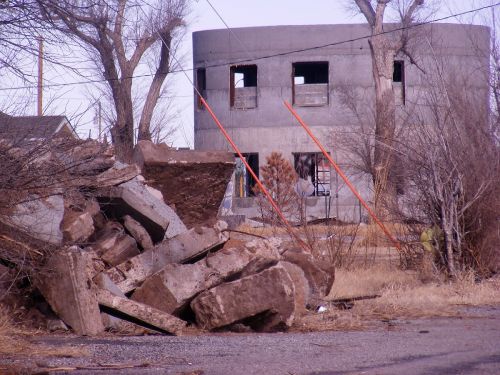
Image Credit: Greensburg GreenTown
Two years after a tornado nearly wiped it off the map, Greensburg, Kansas, continues to evolve as a showcase for green reconstruction
The second anniversary of the twister that all but erased Greensburg, Kansas, from the face of the planet prompted extensive coverage of the town’s civic, commercial, residential, and psychological reconstruction.
A lengthy feature published this week in the Hutchinson News underscores the urgency of the town’s effort to attract businesses to the area.
“Jobs, jobs, jobs will be the key,” Greensburg’s city administrator, Steve Hewitt, told the paper. “This is our main focus now, and it will be for the next couple of years. We need to land new jobs, new industries and new companies.”
But it is the town’s decision to rebuild green – all city buildings to LEED Platinum standards, for example, and many of its residential rebuilds are being held to green standards – that continues to attract most of the attention, so much so that Greensburg is viewed as one of the nation’s most important incubators for green construction.
This week, the National Association of Home Builders announced that officials from the Department of Energy’s National Renewable Energy Laboratory, the Kansas Building Industry Association, and town officials are launching a voluntary program they call the Greensburg GreenHome, which will train workers to build new homes that can be certified to the recently released National Green Building Standard.
One of the groups tracking the town’s residential-construction odyssey is Greensburg GreenTown, a nonprofit community organization whose mission is to work with local officials, business owners, and residents to incorporate sustainable principles into the rebuilding process.
A recently launched GreenTown project, The Chain of Eco-Homes, which includes plans to build as many as 12 model homes using a variety of building techniques. Collectively, the homes will serve as a “living laboratory” for green residential construction that can be brought to market in a range of prices and sizes, and with a range of energy efficiency features and green living products and services.
“Each will be unique, and will be available both as an informational center and as eco-lodging where people can experience green living firsthand in homes that interest them,” GreenTown says. “The Eco-Homes will also be scientifically monitored to demonstrate how each type of construction technology performs under real-world conditions, and to determine actual energy savings.”
The first such project to go up is the Silo Eco-Home, which broke ground in December. GreenTown has created a blog that will follow the project’s development and highlight the pros and cons of the materials (most notably concrete) and techniques used to build it.
In a discussion of whether or not concrete is green, the blog points to sources that warn of the relatively high CO2 emissions generated during its production. But it also points to its structural efficiency, durability, and low maintenance requirements.
Also, GreenTown notes, concrete was abundant in post-tornado Greensburg.
“So, how green is concrete?” the blogger asks. “Well. All we can say is that after a natural disaster it’s a readily available resource. And in Greensburg, Kansas, waste hasn’t been an option since we settled in 1886.”
Weekly Newsletter
Get building science and energy efficiency advice, plus special offers, in your inbox.














0 Comments
Log in or create an account to post a comment.
Sign up Log in